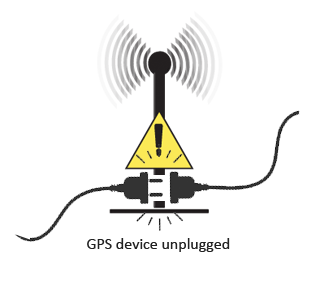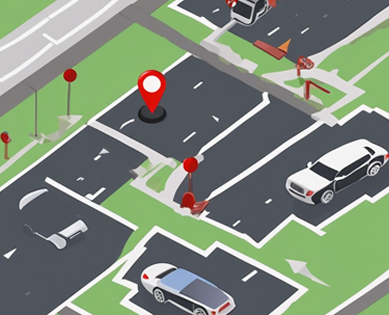Have you ever felt like you’re in a high-stakes game of cat and mouse, but you’re not sure if you’re the cat or the mouse?

Well, that’s exactly how it feels dealing with drivers who are hell-bent on blocking and cheating vehicle trackers.
As someone who’s been in the thick of fleet management and personal vehicle security for years, I’ve seen it all.
From the most ingenious methods to the downright desperate attempts, drivers have continuously sought ways to dodge GPS tracking. Why?
The reasons are as varied as the methods – from maintaining privacy to dodging work responsibilities or even more nefarious purposes.
But fret not; for every clever trick, there’s an even smarter countermeasure. Let me walk you through the seven ways drivers try to throw us off their trail and what we can do to stay one step ahead.
1. The Old School: Physical Obstruction
The Trick: Some drivers return to basics by physically disconnecting or obstructing the GPS tracker. This could mean anything from unplugging devices to covering them in materials that block signal transmission.
The Countermeasure: Regular, surprise vehicle inspections can deter or catch this behaviour. Ensuring trackers are in hard-to-reach places also helps.

Plus, modern trackers alert you when they’re tampered with, so staying updated with the latest tech is key.
2. Tech-Savvy: GPS Jamming Devices

The Trick: A more high-tech approach involves using GPS jamming devices. These gadgets emit signals that interfere with the GPS frequencies, making the vehicle “invisible” to the tracker.
The Countermeasure: Implementing anti-jamming technology is your best bet. Many advanced tracking systems now come with detection capabilities that alert you when a jamming signal is present.
Plus, jamming is illegal in many places, so a good legal knowledge base and cooperation with authorities can also deter this tactic.
3. The Sneak: Using GPS Spoofers
The Trick: GPS spoofing involves tricking the GPS tracker into believing the vehicle is somewhere it’s not. This is done through devices that send false GPS signals to the tracker.
The Countermeasure: Spoofing can be harder to detect but not impossible. High-quality GPS tracking systems can recognise irregularities in signal transmission that suggest spoofing.

Also, educating drivers on the legal and safety implications of spoofing can discourage its use.
4. Material Magic: Wrapping in Foil

The Trick: It sounds like a myth, but wrapping a GPS tracker in aluminium foil can block its signals. This rudimentary method is surprisingly effective—and temporary.
The Countermeasure: This method is usually a temporary fix, as drivers need to remove the foil for their own navigation purposes. Regular physical checks and installing trackers in less accessible areas can mitigate this issue.
5. Disconnecting the Power Supply
The Trick: If a GPS tracker is powered by the vehicle’s electrical system, simply disconnecting it can stop the tracking.
The Countermeasure: Use trackers with their own independent power source, such as a battery. This not only makes it harder to disable, but also ensures tracking continues even if the vehicle’s power is cut.
6. Software Hacks
The Trick: Tech-savvy individuals might attempt to hack the GPS tracker software to disrupt its functionality or send false information.
The Countermeasure: Ensuring your GPS tracking provider offers robust security measures is vital. Regular software updates and employing trackers with encryption can help protect against hacks.
7. Playing the Environment
The Trick: Sometimes, it’s as simple as parking underground or in areas with dense foliage to block GPS signals naturally.
The Countermeasure: While it’s impossible to control all environments, having a tracker that also uses cellular signals or other technologies to triangulate location can minimise these blind spots.

Navigating the Maze of GPS Tracking Evasion
Staying ahead in the GPS tracking game is no small feat. It requires vigilance, technological savvy, and a bit of psychology.
Understanding why drivers might want to evade tracking is as important as knowing how they might attempt it.
Open communication, clear policies regarding tracking, and the use of technology not just as a surveillance tool but as a means to improve efficiency and safety can help mitigate resistance.
And remember, the world of technology is always evolving. Keeping abreast of the latest developments in GPS tracking and countermeasure technologies is crucial. It’s not just about catching those who might want to slip through the cracks; it’s about creating an environment where the need to do so is minimised.
As we wrap up this digital journey through the world of GPS evasion and counter-tactics, it’s clear that the key to staying ahead isn’t just in the hardware or software—it’s in the strategy. It’s a dance of technology and psychology, where the best moves are made with knowledge, preparation, and a bit of empathy.